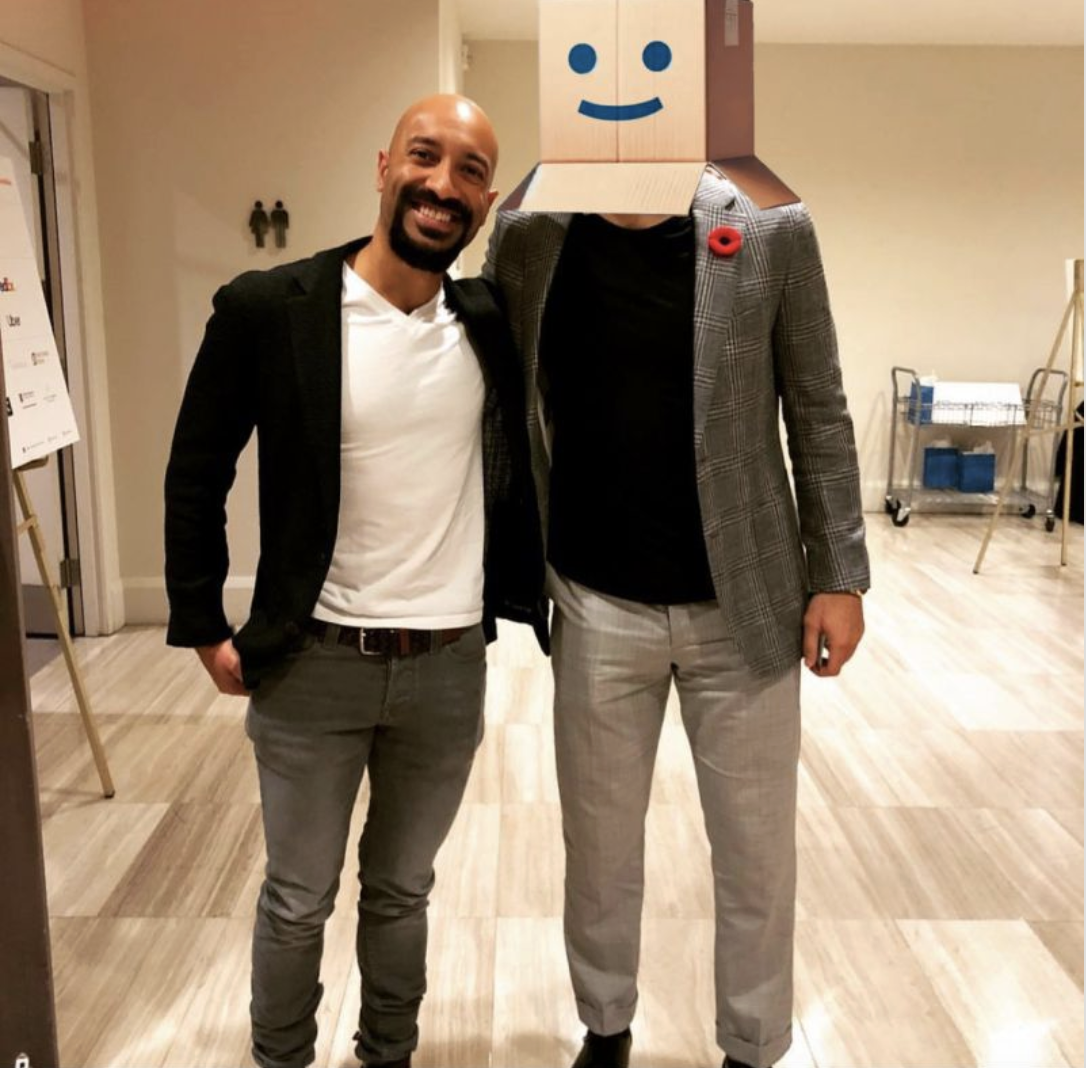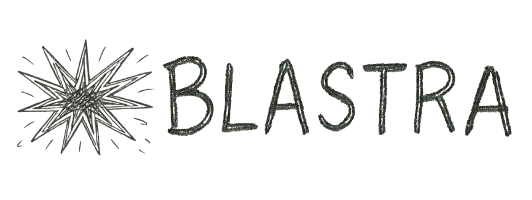You've probably seen him. That funny guy with a cardboard box for a head, wearing a suit, dropping comments and posting what seems like absolute nonsense under serious LinkedIn posts. Meet Boardy - the AI super-connector who's actually revolutionizing how professionals network.
The Unlikely Origin Story
Boardy launched in October 2024 and quickly raised $3 million in pre-seed funding, followed by an impressive $8 million seed round led by Creandum in January 2025. But here's where it gets wild: the seed round was raised almost entirely by Boardy itself - investors spoke with the AI bot and were so impressed they decided to invest before even talking to the human team.
The company was co-founded by Andrew D'Souza (who previously co-founded Clearco), Matt Stein, Shen Sivananthan, and brothers Ankur and Abhinav Boyed. D'Souza describes Boardy as "half OpenAI, half Pixar" - a perfect blend of cutting-edge AI and memorable character that makes every interaction feel surprisingly human.
The cardboard box head and quirky persona are all part of making AI feel less intimidating and more like that helpful connector everyone wishes they had in their network. Here's how it works: you connect with Boardy on LinkedIn, give him your phone number, and he calls you. Yes, an actual phone call with an AI that sounds surprisingly human. You'll hear a friendly Australian accent that immediately sets you at ease, and you just chat naturally about what you're working on and who you need to meet. And if you prefer texting you can also chat with him on WhatsApp instead.
What Boardy Actually Does
Before we dive into the connector magic, understand that Boardy is more than just a networking tool. It's really up to you to come up with ideas on how to use him, but as a very bare minimum, he can:
- Be your strategic sounding board when you're wrestling with business decisions
- Simulate investor conversations to help you nail your pitch before the real meeting
- Role-play customer objections so you're battle-tested before the sales call
But the most important is being your connector: the LinkedIn Networking feature is where the real magic happens. This is what transforms Boardy from a helpful chatbot into your personal superpower.
The Framework: How to Get Connection Requests That Actually Lead Somewhere
Most people fail at networking because they spray and pray. They connect with everyone, write generic messages, and wonder why nothing happens. Here's the strategic framework that actually works.
Step 1: Get Clear on What You Actually Need
Start by having an honest conversation with Boardy about:
- What you do and what your company offers
- What you need right now (not eventually - right now)
- Your specific networking goals for the next 30-90 days
Not sure how to articulate this? Just ask Boardy: "Can you help me figure out exactly who I should be talking to?" He'll ask the right questions to help you crystallize your thinking.
Example conversation starter:
"Hey Boardy, I run a B2B SaaS company helping accounting firms automate client onboarding. We're pre-revenue and looking to close our first 10 customers in the next 60 days. Can you help me figure out who I should be connecting with?"
Step 2: Let Boardy Hunt, But Make Him Explain His Thinking
Ask Boardy: "Can you find people I should talk to about [your specific need]?"
When Boardy suggests profiles, don't just accept them. This is where most people miss the gold. Here's the better approach - ask:
- "Why do you think this person is a good fit for me?"
- "What concerns should I have about this match?"
- "Is there anyone better in your network for this specific need?"
This back-and-forth accomplishes three things:
- You understand the why behind each connection
- You spot potential red flags before wasting time
- You learn how to evaluate connections yourself
Real example:
Boardy: "I think you should talk to Sarah Chen, VP of Product at AccountTech Solutions."
You: "Why Sarah specifically? And are there any reasons this might not be a good fit?"
Boardy: "Sarah's been building tools for accounting firms for 6 years and just launched a new product category. She's mentioned looking for partnerships. The only concern is that her company might see you as a competitor rather than a partner."
You: "That's helpful. Do you have someone who's more clearly in the partner category rather than potential competitor?"
Pro tip: Boardy is also on WhatsApp, which is even more convenient than phone calls. He'll send you LinkedIn links of the people he recommends, making it super easy to check them out before deciding.
Step 3: Review Before Send (This Is Critical)
When you've agreed on a connection, Boardy will ask: "Should I make this introduction?"
Stop right there. Say: "Yes, but show me what you plan to write first."
Look at the draft and ask yourself:
- Does this sound like me, or like a robot?
- Does it clearly explain the value for both sides?
- Is the tone right for this person's style and seniority?
- Would I respond to this message if I received it?
Make adjustments freely:
- "Can you make it less formal? This person posts memes on LinkedIn."
- "Can you emphasize the mutual benefit more? I don't want it to sound like I'm just asking for a favor."
- "Can you mention that I read their recent article about [topic]? I want them to know I did my homework."
This step turns good introductions into great ones. It's the difference between a 30% response rate and a 70% response rate.
Step 4: Close the Loop (Most People Skip This)
After your conversation with the new connection, go back to Boardy and debrief.
If it went well:
"Just talked to Sarah - she's amazing! She introduced me to two potential customers and offered to review our product roadmap. Can you find more people like her?"
If it didn't:
"The call with Mark didn't go anywhere. He's focused on enterprise and we're SMB. Can you adjust your filter to avoid that mismatch in the future?"
This feedback makes Boardy smarter about what you need. Over time, the quality of matches gets better and better because he's learning your actual preferences, not just what you think you want.
Getting Started: How to Actually Connect with Boardy
It's ridiculously simple:
- Search for "Boardy" on LinkedIn (look for the guy with the cardboard box head)
- Send him a connection request
- Once connected, slide into his DMs with a quick intro about what you're working on
- Boardy will set up a phone call with you, or you can chat via WhatsApp for even easier back-and-forth
That's it. Your AI networking assistant is ready to work.
Important note: Boardy is currently free (probably won't last long once they figure out pricing), but they've capped introductions to 3 per day. The good news? Conversations are unlimited. So you can talk strategy, brainstorm, and refine your approach as much as you want - you just get three actual intros per day. Use them wisely.
Think Outside the Box: Listing Yourself on Boardy's Radar
Here's where things get interesting, and we need to talk about distribution strategy that most people completely miss.
At Blastra, we help companies get discovered. We're all about smart directory listings and positioning that puts you in front of the right people at the right time. But here's an out-of-the-box approach that most founders aren't thinking about: listing yourself in Boardy's mental directory.
Traditional directory listings are static. You list your company, add some keywords, maybe get some traffic. Boardy is different. He's a dynamic, intelligent directory that learns, adapts, and actively makes recommendations. When someone in his network needs what you offer, Boardy doesn't wait for them to search - he proactively makes the connection.
Most founders think about Boardy as a tool to help them find people. That's thinking inside the box. The real opportunity is making sure you're the person Boardy recommends when others come looking.
The Out-of-the-Box Directory Strategy
Start this conversation with Boardy:
"Boardy, I want to make sure you recommend me when people are looking for someone with my background. Can we work together to optimize how you introduce me to others?"
Boardy will help you craft a compelling system introduction that captures:
- Your unique value proposition (what makes you different)
- The specific problems you solve (not generic descriptions)
- Your ideal collaboration scenarios (who you're best suited to help)
- Your unfair advantages (what you bring that others can't)
This is powerful because Boardy isn't just your assistant - he's also helping other people in his network. When someone tells Boardy "I need to find a fractional CFO with experience in SaaS," you want to be the first person he thinks of.
Think of it like SEO, but for human connections. You're optimizing yourself to appear in Boardy's "search results" when the right opportunities arise. While everyone else is treating Boardy like a Rolodex they search through, you're positioning yourself as a featured listing in an intelligent, always-on directory that actively markets you to qualified prospects.
This is distribution strategy that thinks outside the cardboard box. And yes, we're going to keep making box puns because that's the kind of memorable positioning that actually works.
The Real Value: Networking That Actually Scales
Think about your typical networking reality:
- You spend hours scrolling LinkedIn
- You craft thoughtful messages that go unanswered
- You attend events and collect business cards that go nowhere
- You follow up until you feel like you're being annoying
- Meanwhile, your actual business needs attention
Now imagine this instead:
- While you sleep, Boardy is identifying potential connections.
- While you're building your product, Boardy is making warm introductions.
- While you're in customer meetings, Boardy is representing you professionally to new opportunities.
- While you're spending time with family, Boardy is building your network strategically.
Professional networking no longer has to be a second full-time job. With Boardy, you get constant, strategic, high-quality networking without the soul-crushing overhead.
Boardy has already facilitated over 150,000 introductions for more than 55,000 followers. Those aren't just numbers - they're real relationships that have led to funding, partnerships, customers, and co-founders.
A Few Pro Tips for Power Users
1. Batch your Boardy conversations
Set aside 30 minutes every Friday to debrief with Boardy about your week. Who was valuable? What new needs emerged? This regular check-in keeps your networking aligned with your evolving goals.
2. Use Boardy for introductions you're scared to ask for
Need to connect with someone way out of your league? Let Boardy handle it. He has no ego and no fear of rejection. The worst case is the same as if you never asked.
3. Share your wins publicly
When Boardy makes a connection that leads to something real, post about it. Tag both Boardy and the connection. This social proof helps everyone - it shows Boardy is valuable, it elevates your connection, and it builds your credibility.
4. Think long-term
Not every connection will pay off immediately. Some of the best relationships take months or years to blossom. Trust Boardy's judgment even when the value isn't immediately obvious.
5. Give as much as you get
When Boardy asks if you're open to being introduced to someone who could use your help, say yes when you can. The network only works if people are generous with their time and expertise.
6. Max out your daily intros strategically
You get three introductions per day. Don't waste them on lukewarm opportunities. Use them for the connections that could genuinely move your business forward. Save the exploratory conversations for later.
And remember: while you're using Boardy to find people, make sure Boardy knows how to position you when others come looking. That's the out-of-the-box distribution strategy that actually scales.
 Here is what Boardy's creator Andrew wrote on his LinkedIn a few weeks ago: "It feels like bringing a character to life. We're shaping his personality, watching him evolve, and seeing how people respond in ways we can't predict."
Here is what Boardy's creator Andrew wrote on his LinkedIn a few weeks ago: "It feels like bringing a character to life. We're shaping his personality, watching him evolve, and seeing how people respond in ways we can't predict."
Recommended Reading
Ready to take your distribution strategy beyond networking? These complementary approaches will help you build systematic visibility and get discovered by the right people:
Directory Strategy as Competitive Moat: The Hidden Advantage of Systematic Presence
While Boardy helps you network with individuals, strategic directory presence ensures you're discoverable when people search for solutions like yours. Learn how to build an enduring advantage through systematic visibility.
How to Get Included in Zapier's Listicles
The holy grail of B2B marketing is getting into LLM recommendations. For software companies, the path runs through Zapier's authoritative blog. Discover the step-by-step process.
How to Get Your First Customers from Your Competitor
A proven manual strategy for B2B SaaS companies to win customers from competitors using G2 reviews. Perfect complement to Boardy's networking approach for customer acquisition.


